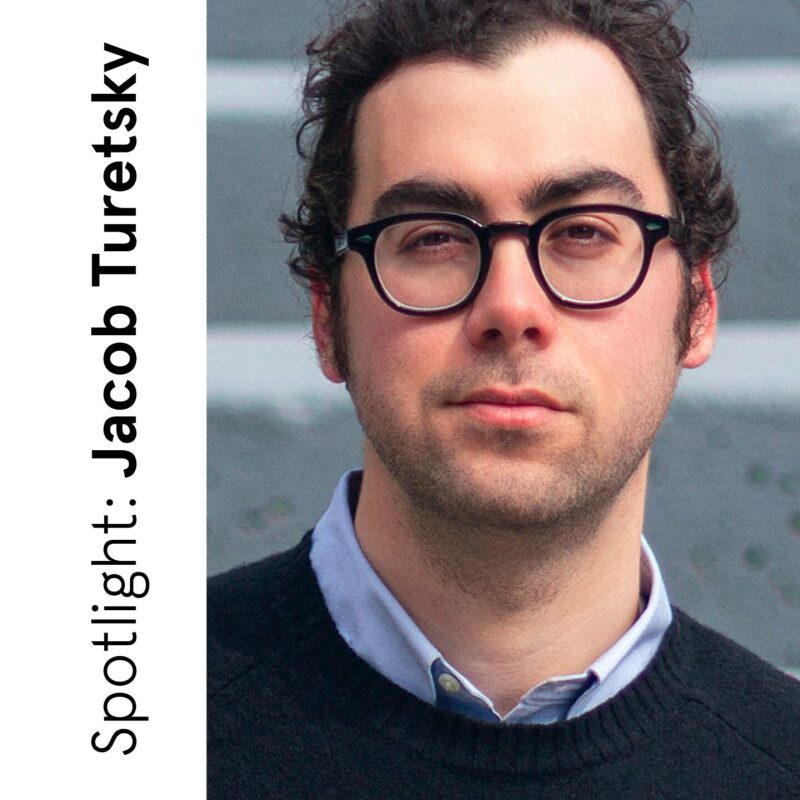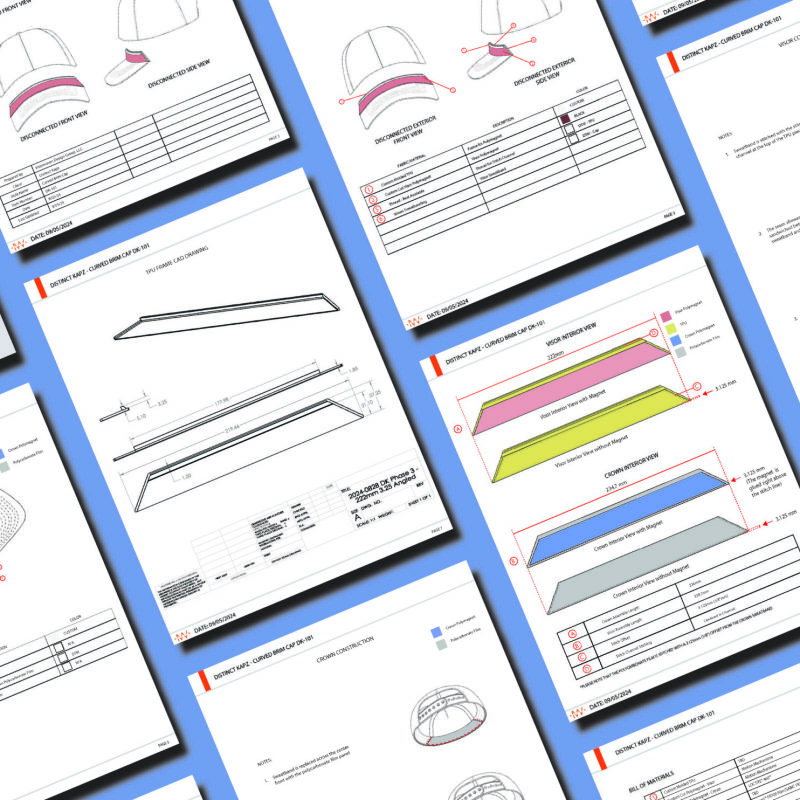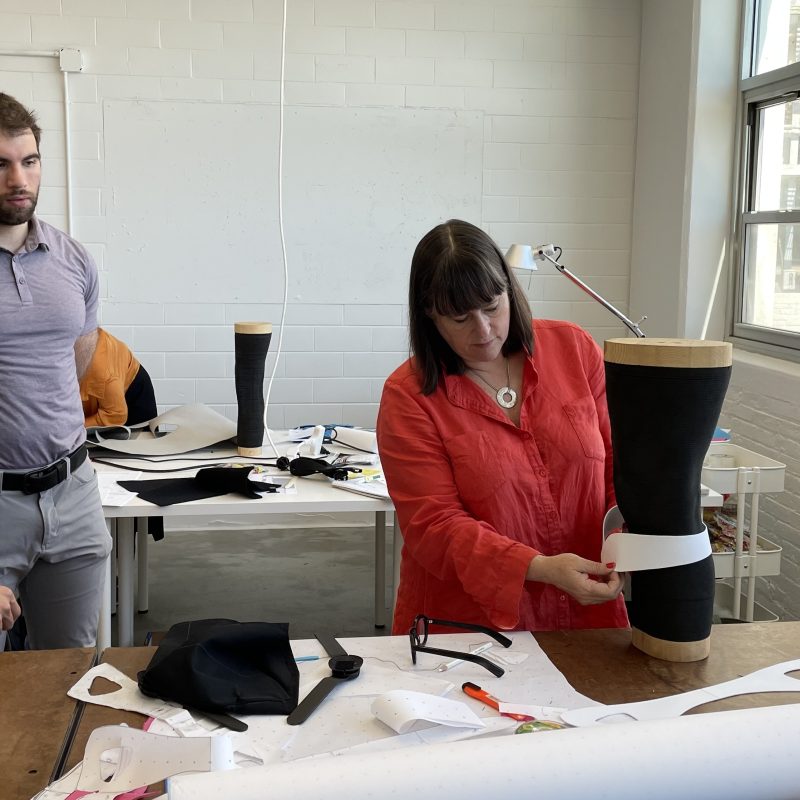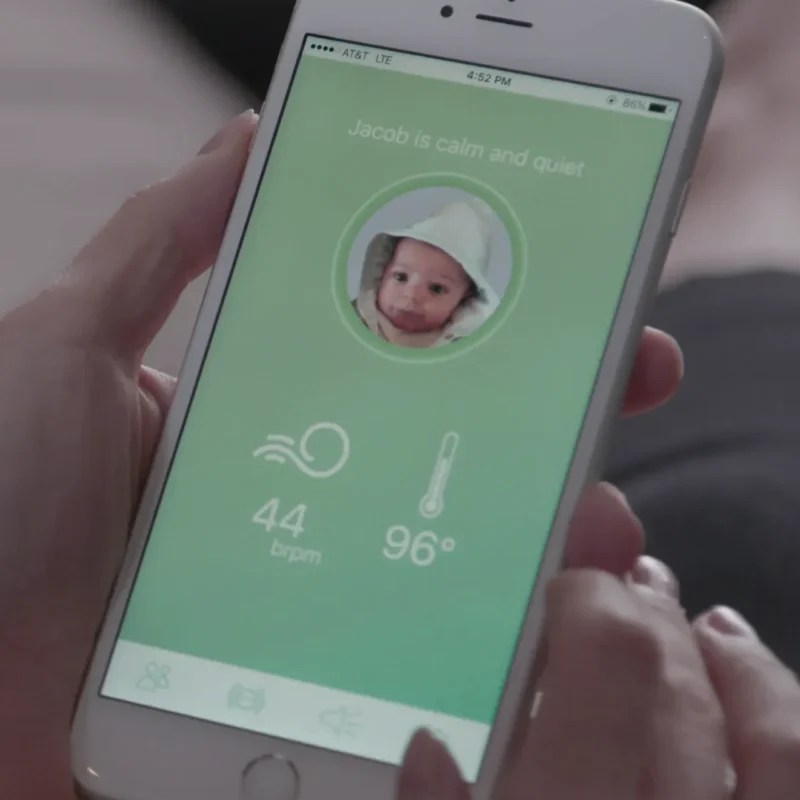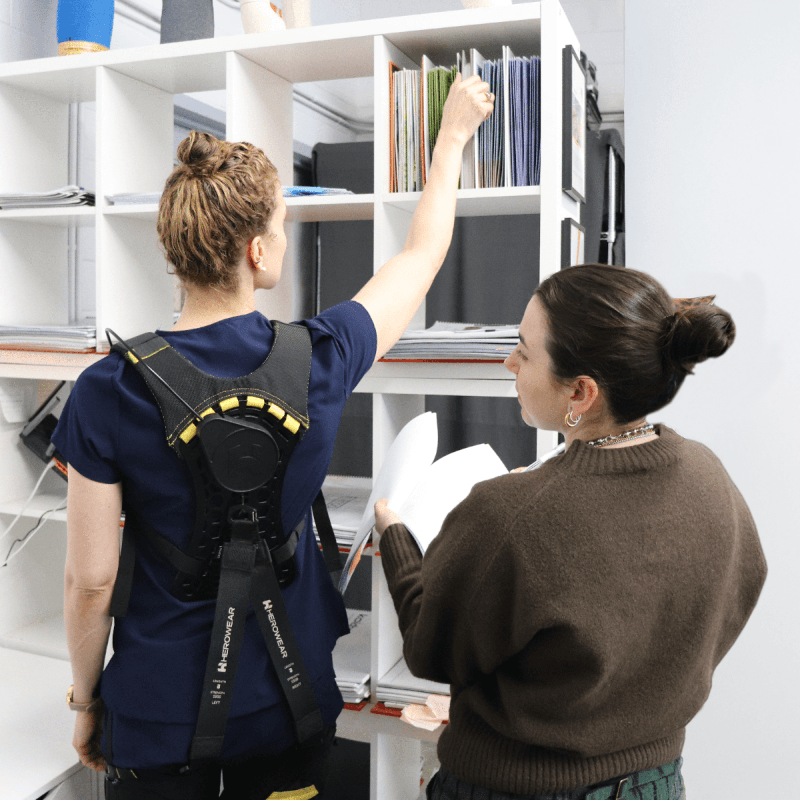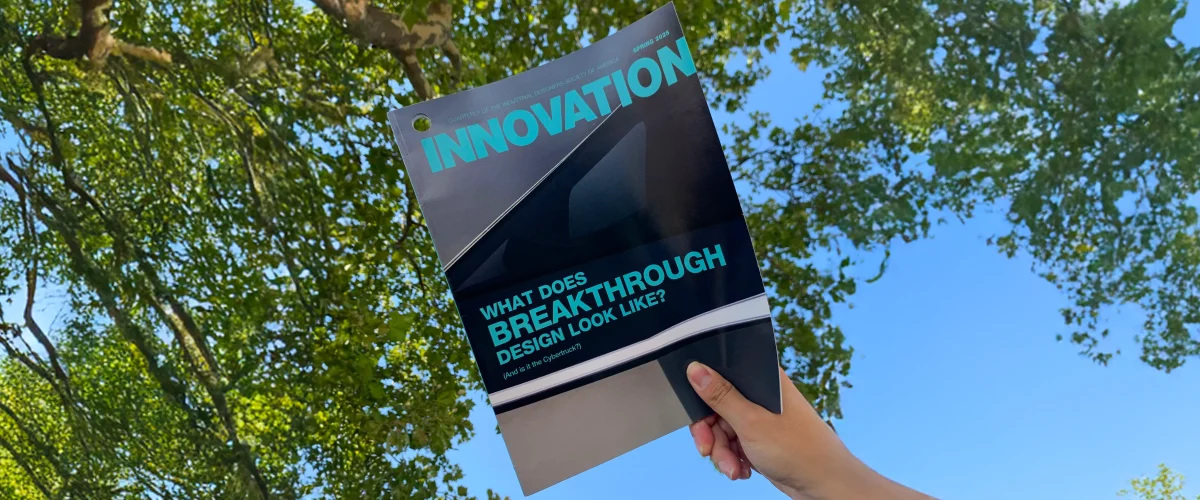
Breakthroughs by Design: How Women Lead Transformative Processes
This article, written by Rebeccah Pailes-Friedman, was published in the Spring 2025 Issue of IDSA’s INNOVATION Magazine.
When we talk about design breakthroughs, we often picture the end result: a futuristic object, a viral prototype, a sleek product that redefines its category. But equally powerful — and less celebrated — are the breakthroughs happening behind the scenes. These are the moments when designers shift the process itself: reimagining how ideas are generated, how people collaborate, and who gets to shape the outcome. And more often than not, it’s women who are leading these shifts.
For this column, I spoke with a few designers whose process innovations are driving the kind of quiet revolutions that rarely get headlines but deeply impact our field. Their approaches don’t rely on shock value or singular genius. Instead, they reflect a deeper, more inclusive vision of what innovation can be- one built on systems thinking, empathy, and collective authorship. Storytelling is a key component in creating a connection between a consumer and the product. The story connects the physical object to the consumer’s emotions. These emotional responses can be powerful, creating a bond between the consumer and the product as well as, crucially, cultivating brand loyalty. Packaging, in particular, has evolved to become part of the product experience, as demonstrated by the plethora of unboxing videos on TikTok, YouTube, and Instagram.
Designing With, Not For: Community-Led Processes
For Hannah Berkin-Harper, IDSA, industrial designer, educator, and the design lead at Street Lab, a nonprofit that creates pop-up programming and placemaking in New York City, design is inseparable from community. Her breakthrough isn’t a product-it’s a process rooted in community engagement and experimentation. “One of the amazing things about designing for pop-ups is the ability to deliver instant transformation of the streetscape that is reactive to community needs,” she says. “We prototype anything we are thinking about and get it out there for people to try. While the end result might take some time, we work together through an iterative process and pilot pop-ups that can lead to more lasting change.”
The result? Solutions that reflect lived experience rather than imposed assumptions. This kind of participatory model pushes back against traditional industrial design workflows, which often isolate designers from the people they serve. It also challenges the idea that designers must lead with answers. Instead, designers become facilitators— stewards of a process that allows insight to emerge organically. In many ways, it’s a radical act of humility.
Rethinking What a “Prototype” Can Be
For Swati Piparsania, Assistant Professor of Industrial Design at Pratt Institute, the body itself becomes the prototype. Her work explores how we choreograph ourselves in space— how design, architecture, and objects shape movement, posture, and behavior. Drawing from sculpture, dance, and performance, Piparsania creates embodied experiences that function as both critique and exploration.
Rather than beginning with sketches or 3D models, her process often starts with a question: What does it feel like to be surveilled? To be constrained by a built system? To reclaim space? From there, she constructs sculptural interventions and wearable provocations that elicit response from the body-awkwardness, tension, release. These reactions become her feedback loop.
In this process, the prototype is not a static thing but a temporal experience. It unfolds through use, reflection, and iteration. Piparsania’s work challenges conventional design tools by making room for emotion, resistance, and improvisation. It blurs the line between object and action, and reframes prototyping as a space for embodied inquiry.
Piparsania says, “I deeply care about social and environmental issues, and I wonder how I get here. Maybe it’s an outcome of being a student of an alternative education system, where many systems of power were challenged and questioned. Then as a designer, our ‘solutions’ were about offering a breadth of possibilities that countered, expanded, and restructured these narratives.”
Her approach is a reminder that not all testing happens in labs-and not all insights come from measuring outcomes. Sometimes the most transformative ideas emerge when we let the body speak first.
Designing Futures with Fiction
Ari Elefterin, a transdisciplinary designer and professor at Parsons School of Design, uses embodied experience as both a method and a site of design innovation. Their project 100 Ways of Sitting invites participants to explore the act of sitting. The prompt is simple, but the outcome is profound: a heightened awareness of the body, environment, and social norms that shape how we occupy space. This exercise can reveal layers of social, spatial, and emotional awareness. Rather than treating the body as a passive recipient of design, Elefterin uses it as an active site of inquiry. Each sitting position becomes a way to ask different questions about comfort, visibility, vulnerability, power, and presence. The project is both poetic and practical, a design method that starts with experience and leads to insight.
In a related project, 100 Ways of Sensorially Connecting with Nature, Elefterin expands this inquiry outward, inviting participants to engage with the natural world through a series of sensory exercises. Some are straightforward, involving only the body; others are more layered, incorporating tool-making-like creating a raft of balloons to float on your breath- analog amplification devices to listen to a lakebed, or a hollow log telescope to see and hear water from the perspective of a tree. These small acts foster a deeper, more intimate connection to the environment. It’s a process that resists quantification but leads to insight about our bodies, our surroundings, and our responsibilities as designers.
Elefterin’s practice represents a breakthrough not in product, but in process. By centering sensory perception and embodied awareness, their work challenges the dominance of visual and functional logic in industrial design. It opens space for more intuitive, ecological, and relational ways of making. In doing so, it offers a model for how design can begin with presence and lead to transformation.
This kind of work, often dismissed as “too conceptual,” is increasingly proving its value in reframing what design is for and whose futures it should serve.
Circular Thinking as a Starting Point
Process breakthroughs also show up in how some designers approach materials and systems, starting not with the product, but with the waste. Rather than asking, “What should we make?” these designers begin by asking, “What materials already exist, and how might they guide what we design?” This reverse-briefing strategy reframes sustainability not as a feature to layer on later, but as the starting condition of the design process itself.
This systems-first mindset leads to radically different outcomes: garments made from agricultural byproducts, objects designed to be taken apart as easily as they’re assembled, or products that can return to the supply chain rather than the landfill. The goal isn’t just to reduce harm, it’s to rethink what design makes possible when waste becomes resource and constraint becomes opportunity.
It’s not a new tool-it’s a shift in framing. And when sustainability is embedded from the beginning, it opens space for new priorities, aesthetics, and lifecycles to emerge.
Designing for Ambiguity
Not all breakthroughs come from certainty. In fact, some of the most impactful process innovations happen when designers intentionally create space for ambiguity. Instead of rushing toward a defined solution, these approaches hold questions open longer, allowing space for reflection, tension, and unexpected insight.
Take the practice of ambiguity-led design, where teams delay the “problem definition” phase to sit with complexity. In healthcare, for instance, this might mean shadowing caregivers without a brief. In social design, it might involve long-term observation before forming a hypothesis. These methods resist the pressure to define too quickly, recognizing that a too-narrow scope can shut down possibilities.
One design researcher in our WID network, Dr. Elham Morshedzadeh, frames it this way: “Ambiguity isn’t a gap to fix—it’s where the real work begins.” This mindset reframes uncertainty as fertile ground rather than failure. By allowing room for open-ended exploration, these designers shift the process from linear to iterative, from transactional to relational. It’s not about working slower: it’s about working more openly. And in a time of accelerated timelines and high-pressure innovation cycles, that openness itself becomes radical.
Breakthroughs in Leadership
Sometimes, the most transformative shift isn’t in a material or method, but in the structure of the team itself. Ayse Birsel co-founder of the design studio Birsel + Seck, exemplifies this by applying her design principles not only to products but also to organizational leadership.
Birsel’s approach, detailed in her book Design the Life You Love, emphasizes deconstructing and reconstructing aspects of life and work to align with one’s values and aspirations. She encourages leaders to view their organizations as design projects, fostering environments that prioritize empathy, collaboration, and adaptability.
In her workshops and writings, Birsel advocates for a leadership style that is inclusive and participatory. By involving team members in the design process of their work environments, she believes organizations can cultivate a sense of ownership and purpose among employees. This method not only enhances team cohesion but also drives innovation by leveraging diverse perspectives.
Birsel’s philosophy underscores the idea that leadership is not a static role but a dynamic process that benefits from continuous reflection and redesign. By embracing design thinking in leadership, she demonstrates how organizations can evolve to meet the changing needs of their teams and the broader market.
The Process Is the Product
In a moment when everyone is looking for the next big thing, these designers remind us that some of the most meaningful breakthroughs are already underway in the ways we listen, collaborate, and imagine. They’re designing not just objects or experiences, but new models for how design itself happens.
And if we want to build a more inclusive, equitable, and future-ready design culture, we’d be wise to start there.
Note: Al assistance was used during the early stages of developing this article, specifically for brainstorming topic directions and outlining structure. All final content and writing are original and authored by the writer.
– Rebeccah Pailes-Friedman, FIDSA
rpf@getinterwoven.com
rpailes@pratt.edu


